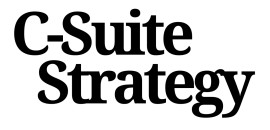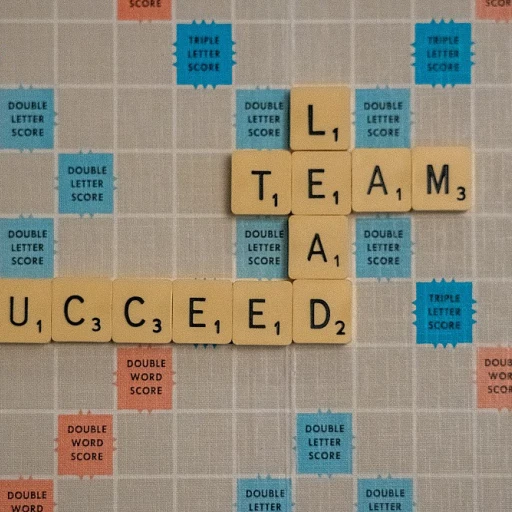
Understanding the Leader Standard Work Template
Defining an Effective Foundation for Leaders
In the realm of leadership, efficiency and consistency are paramount to fostering sustainable growth and achieving organizational goals. A Leader Standard Work Template (LSW) serves as a formidable tool in this pursuit, streamlining the responsibilities and empowering leaders to focus on vital tasks. This template acts as a roadmap, guiding leaders through their daily, weekly, and monthly schedules, thus enhancing operational excellence. A well-crafted LSW harmonizes with lean management practices, optimizing time spent on tasks that drive continuous improvement. It offers leaders a framework for visual management, aligning daily routines with broader strategic objectives. By embedding standard operating procedures into leadership routines, standard work templates foster predictability and uniformity across the leadership spectrum. Through structured agendas and predefined schedules, an LSW aids in maintaining focus during activities such as meetings, gemba walks, and problem-solving sessions. This standardization allows leaders to effectively manage their time and remain responsive to team needs, ultimately boosting leadership performance. Learn more about ongoing quality enhancement and its integration into leadership practices. While understanding the Leader Standard Work Template may seem straightforward, its application requires diligent adaptation to the unique context of each organization. This adaptability ensures that the LSW resonates with the cultural and operational nuances that define an organization, paving the way for effective implementation and maximizing its impact on the leadership landscape.Benefits of Implementing a Standard Work Template
Maximizing Leadership Impact with Streamlined Procedures
Implementing a Standard Work Template can significantly enhance the efficiency and performance of leaders within an organization. This structured approach allows leaders to focus on critical tasks, optimize their time management, and foster a culture of continuous improvement. One of the primary benefits of deploying such templates is the facilitation of lean management practices. By utilizing standard work templates, leaders can allocate time to essential leadership activities like problem solving, gemba walks, and engaging with team members in a more strategic manner. Standardizing these practices not only ensures consistency in leadership performance but also enhances operational excellence throughout the organization. Furthermore, integrating templates as part of lean leadership allows for more effective visual management. Leaders can gain a clearer overview of their daily, weekly, and monthly schedules. It helps them to prioritize their tasks and improve the balance between urgent and important duties within their leadership roles. This holistic approach ultimately contributes to the better alignment of leadership objectives with organizational goals. The introduction of a leader standard work framework also promotes adaptability and resilience. These qualities become particularly vital when navigating through the complexities of today's business environment. With streamlined processes, management can swiftly adjust their strategies, remaining proactive rather than reactive. For organizations aiming to achieve operational excellence, aligning every leader with a work LSW fosters a unified approach to continuous improvement. This can lead to improvements in productivity and morale, as well as a more structured approach to new challenges. More insights on addressing hidden inefficiencies within operations can be found in this deep dive into the 8 wastes.Customizing the Template for Your Organization
Tailor-Made Approaches for Leadership Success
Customizing a Leader Standard Work Template (LSW) is a strategic necessity for any organization seeking operational excellence. Every business has its own unique processes, culture, and strategic goals. Therefore, a one-size-fits-all approach to leadership efficiency simply won't suffice. By adapting the template to your organization, you ensure that it aligns with your specific needs, promoting continuous improvement and lean management.To start, consider the unique challenges and objectives within your organization. Are there specific inefficiencies that need addressing? By conducting gemba walks and engaging in problem-solving strategies, leaders can gain valuable insights into what needs to be refined. Engaging with team members during this process not only strengthens relationships but also provides a clearer picture of how tasks are carried out on a daily basis.
Here's how leaders can customize the template:
- Identify Core Activities: Determine the key responsibilities that contribute to operational objectives and standard operating procedures.
- Prioritize Tasks: Use visual management tools to distinguish between essential daily, weekly, and monthly activities.
- Set Realistic Timeframes: Allocate specific time slots within your daily schedule for critical tasks and leadership duties ensuring time is managed judiciously.
- Integrate Lean Leadership Practices: Include consistent gemba walks and incorporate feedback loops for ongoing improvement.
Such a tailored approach not only refines daily operations but also empowers leaders to maintain focus on strategic priorities and leadership development. Ensuring a flexible yet structured approach allows organizations to remain dynamic and resilient in today’s competitive landscape.
Integrating the Template into Daily Operations
Seamlessly Integrating Your Leader Standard Work into Routine Operations
Embedding the leader standard work (LSW) template into daily operations is a strategic move that enhances both leadership and organizational efficiency. To ensure effective integration, leaders need to facilitate a continuous flow of communication and engagement with their team members. Here are some practical steps:
- Consistent Routine: Establish a consistent routine by incorporating LSW into your daily, weekly, and monthly schedules. This predictability allows for focus on key tasks without neglecting opportunities for improvement.
- Visual Management: Leverage visual management tools such as dashboards or charts to track daily performance and progress. This visibility helps the team stay aligned with operational goals and ensures that everyone is on the same page regarding priorities.
- Gemba Walks: Regularly conduct Gemba walks to engage with team members directly on the operational floor. This practice facilitates immediate problem solving, reinforces lean management principles, and promotes a culture of continuous improvement.
- Effective Meetings: Optimize your meeting schedules by aligning them with the leader standard template. Clear agendas and objectives reduce time-wasting discussions and improve decision-making processes.
- Training and Development: Consistently conduct training sessions to familiarize team members with the LSW approach. This ensures everyone understands the process and can contribute effectively to its success.
By integrating the LSW template into your daily operations, leaders not only promote operational excellence and lean leadership but also ensure a sustained focus on continuous improvement. Proactive management and the structured approach of standard work templates empower leaders to drive efficiency across their organizations.
Overcoming Challenges in Adoption
Addressing Common Obstacles in Template Adoption
Implementing a leader standard work template can significantly enhance leadership efficiency, yet it often comes with its own set of challenges. Understanding these hurdles is crucial for successful adoption and integration into daily operations. Here are some common obstacles and strategies to overcome them:
- Resistance to Change: Leaders and team members may be hesitant to adopt new processes. To mitigate this, emphasize the benefits of the template, such as improved time management and operational excellence. Engage in open discussions and provide training sessions to ease the transition.
- Lack of Customization: A one-size-fits-all approach rarely works. Ensure the template is tailored to fit the unique needs of your organization. This customization can enhance its relevance and effectiveness, making it easier for leaders to integrate into their daily schedules.
- Insufficient Training: Without proper training, leaders might struggle to utilize the template effectively. Invest in comprehensive training programs that cover the principles of lean management and continuous improvement, ensuring leaders are well-equipped to leverage the template.
- Inconsistent Use: Consistency is key to realizing the full benefits of a leader standard work template. Encourage regular use by incorporating it into daily, weekly, and monthly routines. Visual management tools can also help keep the process on track.
- Overlooking Gemba Walks: Gemba walks are essential for identifying real-time issues and fostering a culture of problem-solving. Ensure these are integrated into the template to promote proactive leadership and continuous improvement.
By addressing these challenges head-on, organizations can pave the way for successful adoption of leader standard work templates, ultimately leading to enhanced performance and lean leadership.














